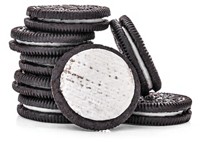Advertisement
Grab your lab coat. Let's get started
Welcome!
Welcome!
Create an account below to get 6 C&EN articles per month, receive newsletters and more - all free.
It seems this is your first time logging in online. Please enter the following information to continue.
As an ACS member you automatically get access to this site. All we need is few more details to create your reading experience.
Not you? Sign in with a different account.
Not you? Sign in with a different account.
ERROR 1
ERROR 1
ERROR 2
ERROR 2
ERROR 2
ERROR 2
ERROR 2
Password and Confirm password must match.
If you have an ACS member number, please enter it here so we can link this account to your membership. (optional)
ERROR 2
ACS values your privacy. By submitting your information, you are gaining access to C&EN and subscribing to our weekly newsletter. We use the information you provide to make your reading experience better, and we will never sell your data to third party members.
Education
Newscripts
Science courtesy of YouTube and cookies
by Jeff Huber
November 7, 2016
| A version of this story appeared in
Volume 94, Issue 44
Yawn-inspired research

Andrew Gallup knows how to make good use of all those cat videos on the internet. And he knows how to do it with an eye toward science.
The SUNY Oneonta psychology professor recently combed the web, compiling videos of felines and other furry mammals yawning. By calculating these animals’ average yawn duration, Gallup noticed a pattern: Yawn length is positively correlated with mammalian brain weight and cortical neuron count (Biol. Lett. 2016, DOI: 10.1098/rsbl.2016.0545).
The correlation is notable because it demonstrates that a mammal’s brain, and not its body size, affects yawning. For instance, despite their large size, camels, gorillas, horses, lions, and walruses all exhibit a shorter average yawn length than humans, who are superior to those creatures when it comes to brain weight and complexity. To explain this phenomenon, Gallup posits that a longer yawn is necessary for larger and more complex brains that rely on the involuntary action as a means of promoting blood circulation and delivering oxygen.
Gallup, a self-described “yawnologist,” hopes his results will lead to research into whether longer yawns are reflective of superior cognitive ability within the same species. If such a correlation exists among humans, watch out: It will mean yet another reason to feel self-conscious when yawning in front of others.
Oreos do the twist

Three former Princeton University engineering graduate students have unlocked the secret to the Oreo twist-off game. For the uninitiated, the Oreo twist-off game is a game of chance akin to pulling apart a wishbone. To play, two participants each grab a different side of an Oreo, twist, and separate the cookie’s two wafers. The winner is the one who winds up holding the wafer with the cream affixed.
As grad students, John Cannarella, Daniel Quinn, and Joshua Spechler would meet during their department’s afternoon snack break, where, one day, the presence of an Oreo at the event led to a discussion about unlocking the physics behind the cookie’s game. After going through hundreds of Oreos and trying out different cookie separation tactics such as twisting at different speeds and angles, the engineers discovered the trick: the cream tends to adhere to the same side for every cookie in a given Oreo package.
The engineers believe this quirk is because all cookies within a package undergo the same manufacturing process, with hot cream being applied to one wafer before the other wafer is affixed. Given its hotter temperature, cream applied to the initial wafer flows better into that wafer’s crevices, creating a tighter bond that makes the cream more likely to stick to the wafer when an Oreo is twisted apart.
“We ate a lot of Oreos” to achieve this insight, says Quinn, who is now an engineering professor at the University of Virginia. But all that exposure didn’t ruin his appreciation for the cookie. He tells Newscripts, “I still love Oreos.”
Jeff Huber wrote this week’s column. Please send comments and suggestions to newscripts@acs.org.




Join the conversation
Contact the reporter
Submit a Letter to the Editor for publication
Engage with us on Twitter